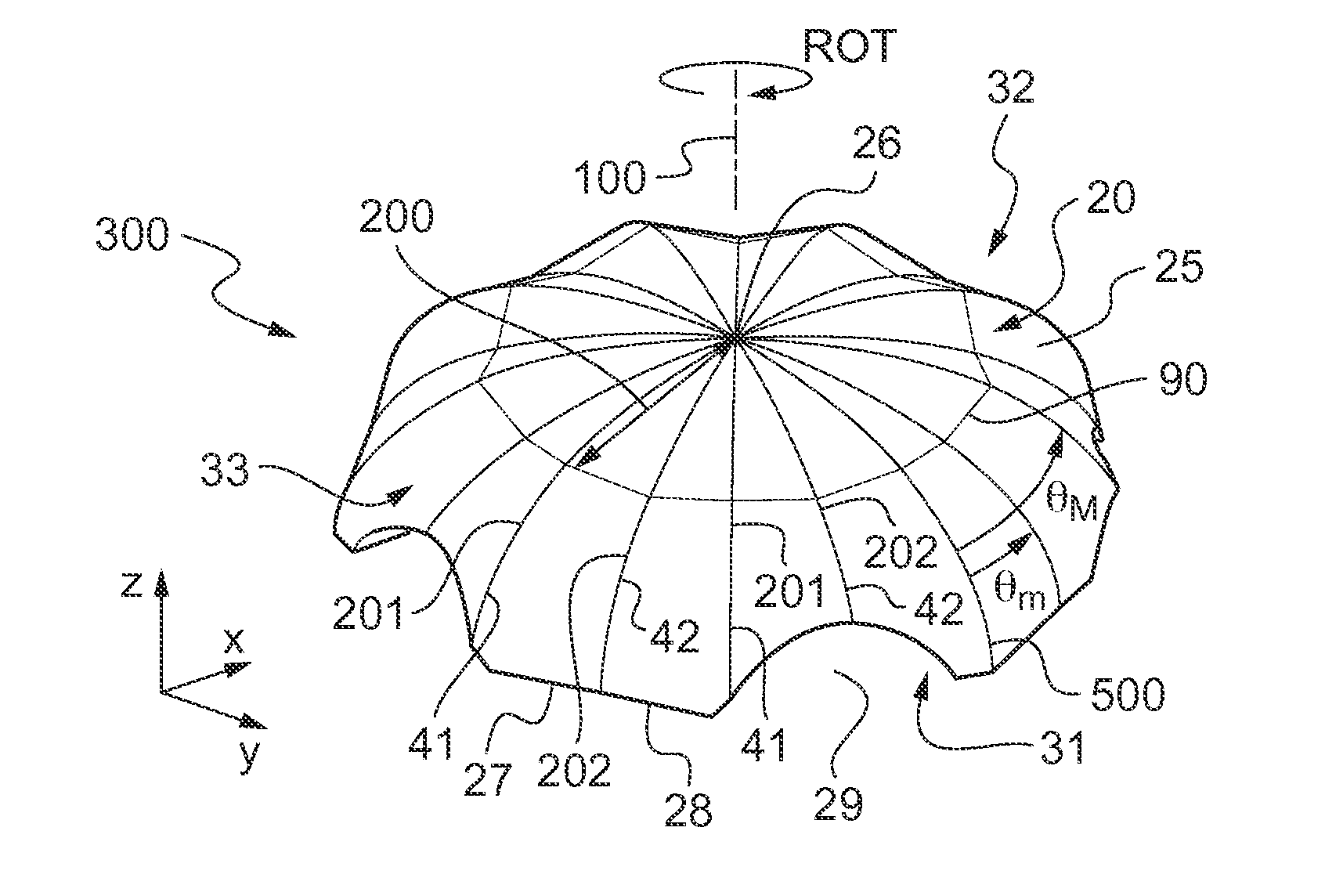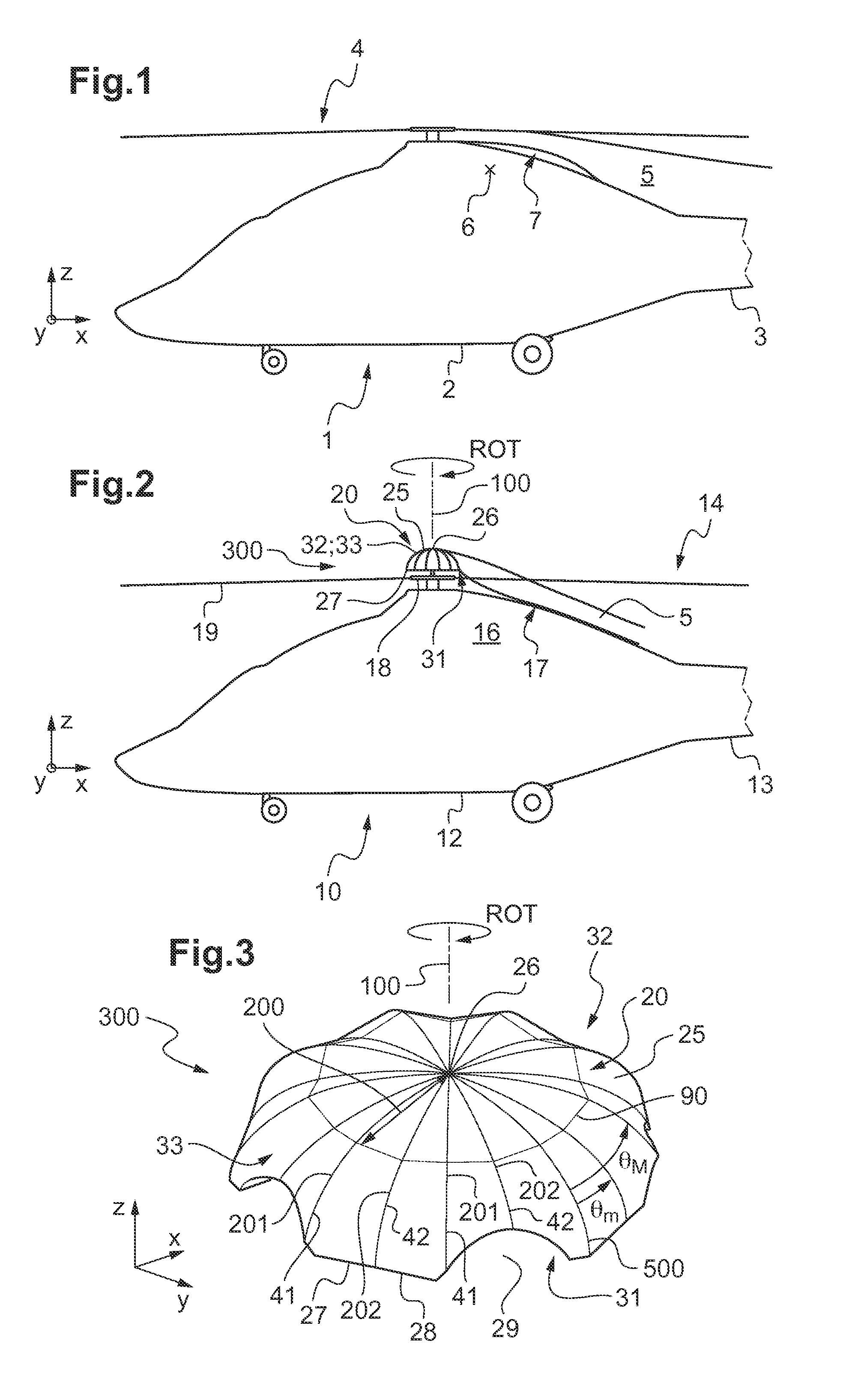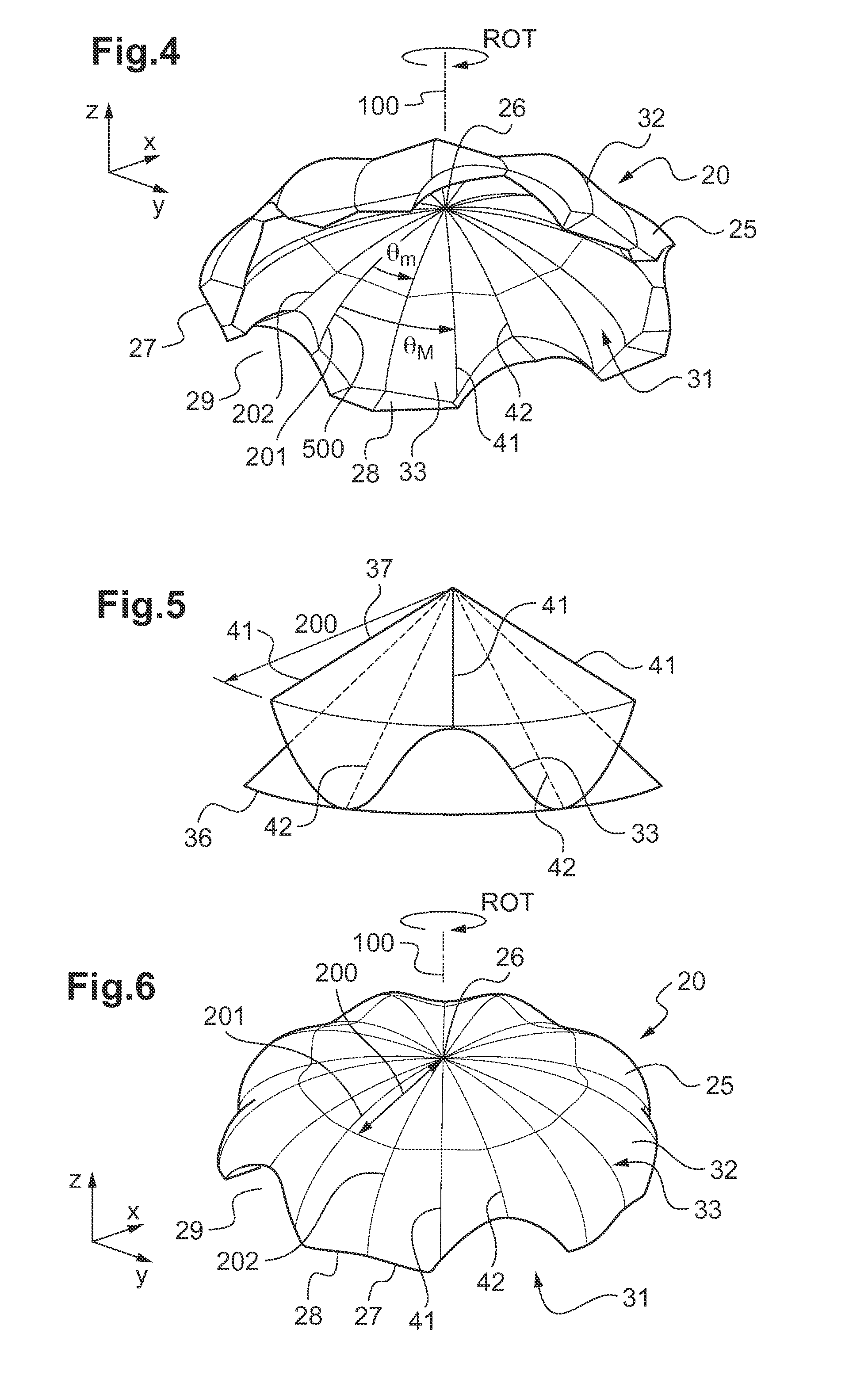Rotor dome, a rotor, and a rotorcraft
a technology of rotors and domes, which is applied in the direction of rotocraft, propellers, water wheels, etc., can solve the problems of limiting the extent to which a downstream slipstream slips, the dome tends to deflect, and the airflow is generally disturbed downstream from the lift rotor and the cover of the airframe, so as to reduce the magnitude of the dynamic behavior, reduce the magnitude of the wake, and dissipate more quickly
- Summary
- Abstract
- Description
- Claims
- Application Information
AI Technical Summary
Benefits of technology
Problems solved by technology
Method used
Image
Examples
first embodiment
[0128]In the first embodiment shown in FIGS. 3, 4, and 6, at least one of said top and bottom edges 41 and 42 extends radially.
[0129]By way of example, all of the edges extend along radii of the cap.
[0130]In a first variant of the first embodiment, as shown in FIGS. 3 and 4, the thickness between an undulating face and a reference non-undulating middle geometrical surface 50 is determined by the following relationship between a given bottom edge 42 and a given top edge 41 following the given bottom edge 42:
e(r,θ)=e0+Δe(r)(θ-θmθM-θm-12)
where e(r,θ) represents said thickness, e0 is a constant representing a mean thickness, Δe represents a relationship giving a difference between a maximum thickness and a minimum thickness at a radial position “r”, “θ” represents an azimuth position between said given bottom edge 42 and said given top edge 41, “θm” represents an azimuth position of said given bottom edge 42 relative to a reference radius 500, and “θM” represents an azimuth position of ...
second embodiment
[0133]In a second embodiment shown in FIGS. 8 and 9, at least one of said top and bottom edges 41 and 42 does not extend along a radius of the cap 25.
[0134]For example, at least one edge 40 presents a convex shape that is convex pointing 80 in the direction of rotation ROT of the dome 20.
[0135]In a first variant of the second embodiment, as shown in FIG. 8, the thickness between an undulating face and a reference non-undulating middle geometrical surface 50 is determined by the following relationship between a given bottom edge 42 and a given top edge 41 following the given bottom edge 42:
e(r,θ)=e0+Δe(r)(θ-θm(r)θM(r)-θm(r)-12)
where e(r,θ) represents said thickness, e0 is a constant representing a mean thickness, Δe represents a relationship giving a difference between a maximum thickness and a minimum thickness at a radial position “r”, “θ” represents an azimuth position between said given bottom edge 42 and said given top edge 41, “θm(r)” represents a relationship giving an azimuth...
PUM
 Login to View More
Login to View More Abstract
Description
Claims
Application Information
 Login to View More
Login to View More - R&D
- Intellectual Property
- Life Sciences
- Materials
- Tech Scout
- Unparalleled Data Quality
- Higher Quality Content
- 60% Fewer Hallucinations
Browse by: Latest US Patents, China's latest patents, Technical Efficacy Thesaurus, Application Domain, Technology Topic, Popular Technical Reports.
© 2025 PatSnap. All rights reserved.Legal|Privacy policy|Modern Slavery Act Transparency Statement|Sitemap|About US| Contact US: help@patsnap.com



